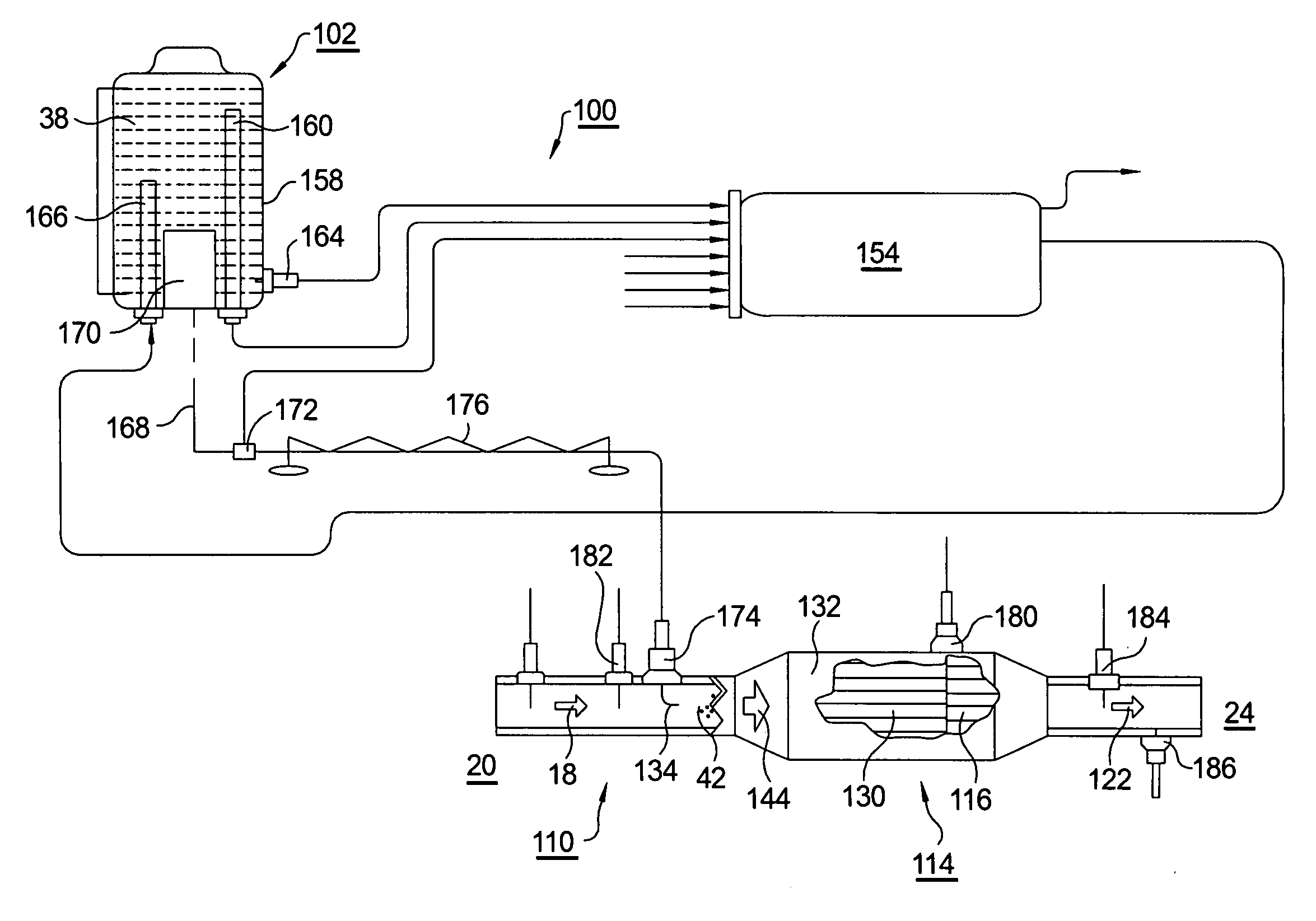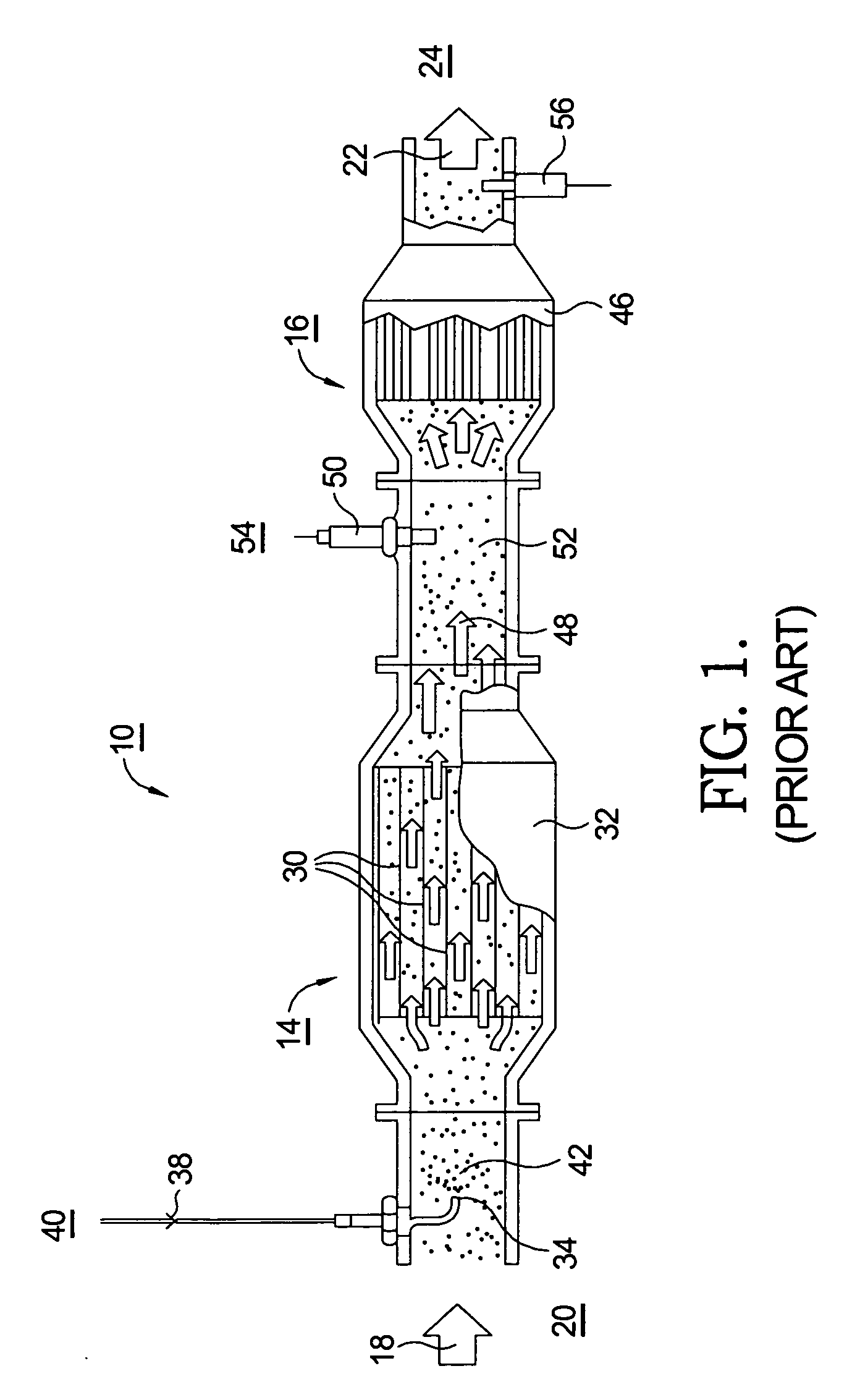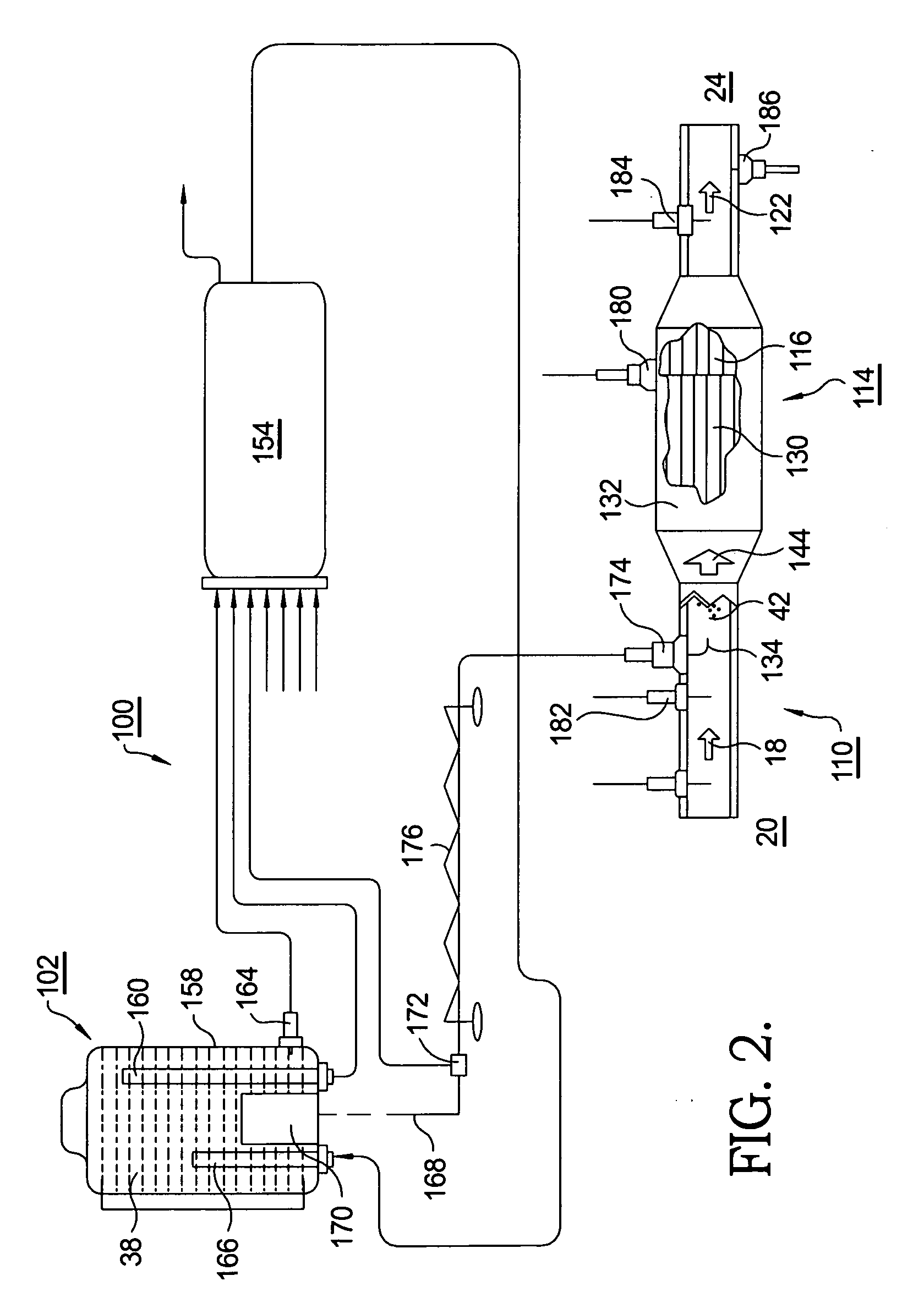Selective NOx catalytic reduction system including an ammonia sensor
a catalytic reduction and sensor technology, applied in the direction of engines, mechanical equipment, machines/engines, etc., can solve the problems of excessive ammonia in the tailpipe, difficult to achieve, and untreated engine exhaust typically contains an unacceptable level of nox, so as to reduce the size, volume, complexity and cost of the scr system, and reduce the hysteresis. , the effect of speeding up the respons
- Summary
- Abstract
- Description
- Claims
- Application Information
AI Technical Summary
Benefits of technology
Problems solved by technology
Method used
Image
Examples
Embodiment Construction
[0023]The benefits and advantages of the present invention may be better appreciated by first considering a prior art SCR system.
[0024]Referring to FIG. 1, a catalyst assembly 10 in a prior art SCR system comprises a Selective Catalytic Reduction (SCR) unit 14 and an optional ammonia slip catalyst 16 connected in sequence to treat raw engine exhaust 18 from an internal combustion engine 20, especially a diesel or gas engine operated with excess oxygen in the exhausted gases, and to discharge treated engine exhaust 22 to atmosphere 24.
[0025]SCR 14 includes a first selective catalyst 30 disposed in a first housing 32 for selectively reducing NOx to N2 in the presence of NH3 and O2, as described above, in known fashion. An atomizing nozzle 34 prior to SCR 14 receives a reductant solution 38 containing urea and / or ammonia from a source 40 and sprays atomized reductant solution 42 into exhaust 18.
[0026]Slip catalyst 16, a second selective catalyst, is disposed in a second housing 46 for ...
PUM
 Login to View More
Login to View More Abstract
Description
Claims
Application Information
 Login to View More
Login to View More - R&D
- Intellectual Property
- Life Sciences
- Materials
- Tech Scout
- Unparalleled Data Quality
- Higher Quality Content
- 60% Fewer Hallucinations
Browse by: Latest US Patents, China's latest patents, Technical Efficacy Thesaurus, Application Domain, Technology Topic, Popular Technical Reports.
© 2025 PatSnap. All rights reserved.Legal|Privacy policy|Modern Slavery Act Transparency Statement|Sitemap|About US| Contact US: help@patsnap.com



